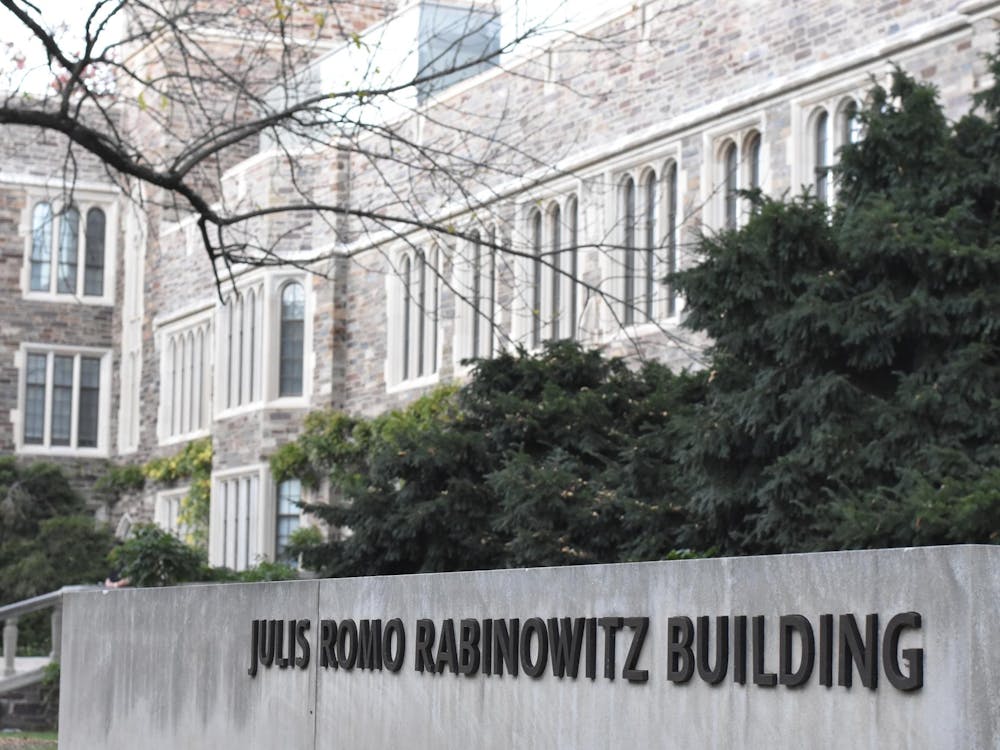To the Editor:
Last week, The Daily Princetonian ran an article about the fact that I said the n-word in my course VIS321: Words as Objects. While this did happen, the information in the article about the context of that utterance is insufficient. That moment was grounded in the author’s long-term interest in the word and how it functions in his poetry, as well as the pedagogical progression to the analysis of a poem where a word functions as an object. While I regret not discussing how we would discuss that word, I maintain that engaging with that poem was a critical part of the class’s pedagogy.
Regarding the events in VIS321, we first must engage “Stereo(TYPE),” Jonah Mixon-Webster’s first poetry collection that contains the poem we were discussing in class that day, which the ‘Prince’ did not substantively describe. Mixon-Webster’s poetry is not shy about wrenching and provoking his readers — through his versatility in the form of his poetry, as well as his vocabulary — but I don’t gather that he makes these formal and conceptual choices to indicate that some people are allowed to read his poems and others not. Nor do I think he intends for all willing persons to be able to read his collection, but for only some to discuss it. Mixon-Webster’s abiding interest in and prolific use of the n-word is demonstrated in a blogpost for the Poetry Foundation titled, “Poetics of the Iterative: On the N-word in Black Poetry & Language (Part I).”
It’s unfortunate that the ‘Prince’ did not provide any broader context for VIS321 either, since a paragraph on the structure and pedagogy of the class, at least, would have helped frame what happened on Nov. 3. As written, the article made it seem as if I dropped an n-bomb out of the sky. I did not.
VIS321 is more a visual art class than a writing class, so naturally we look at a lot of artworks that are composed of single words or phrases. In other words, artworks that are as much object as text, or words that have undue significance or weight attached to them. Some examples would be Eugen Gomringer’s “Wind”, Augusto de Campos’ “Linguaviagem”, Edward Ruscha’s “SPAM”, Adrian Piper’s “My Calling Card”, Kay Rosen’s “The Forest for the Trees”, and Glen Ligon’s “Untitled (America)”. Given this focus, I feel it would have been politically evasive and intellectually dishonest of me to ignore an artwork dedicated to the single-most weighty word in the English language — the n-word — should an opportunity present itself. Thanks to the publication of Mixon-Webster’s book last year, the opportunity did; hence my decision to include four of his poems and the abovementioned blogpost on the course reading list.
The readings in the course were arranged in a clear and meaningful progression, from a global analysis of the osmotic nature of humanity’s first alphabets (Jared Diamond), to an examination of a life-long working and reworking of material (Lydia Davis), to the original set of emojis (Shigetaka Kurita), and the concept of a poem that writes itself (Emmett Williams). The reading list concluded with two focused and complementary examples: a single object that behaves like a word (Bruno Latour’s essay on the Berlin key) and a single word that behaves like an object (Mixon-Webster’s “Black Existentialism No. 8: Ad Infinitum; or Ad Nauseam”).
That is the context for what took place in class on Nov. 3, when we first looked at Mixon-Webster’s stated interest in craftsmanship, the variety of forms in which he writes — monologue, prose poem, free verse, concrete poem — and then passed the classroom copy of “Stereo(TYPE)” around so that everyone could see “Black Existentialism No. 8: Ad Infinitum; or Ad Nauseam” on the page, as well as read it in its one-word entirety. When the book came back around to me, I cited the text of that poem by posing a question using the n-word.
I am extremely sorry that I overestimated my familiarity with my students and assumed that we could enter a discussion of this 20-page, one-word poem about the n-word without first making some ground rules about limits for the usage or even the discussion of the word at all. As I have heard loud and clear from my students, that was a grievously hurtful overestimation on my part. I also regret, in hindsight, not realizing that it would have been helpful to take a moment to reiterate the pedagogical path of readings and assignments that had led up to this particular moment and word. Not doing so was also a mistake.
In my defense, I can only say that, up to that point, I felt the students were so enthusiastically engaged in their coursework that I was confident we could have this discussion. Clearly I was wrong, and for that, I sincerely apologize. I wish I could undo the harm that this gross misreading of the room has caused.
At the same time, I take the printed word seriously and have great respect for any author who manages to get their work published. When words are printed on pages, those pages are bound into a volume, and that volume is made available for my consideration as a reader, that’s significant to me. I feel I have the right and obligation not only to read those words but also share and discuss them. I cannot think of any acceptable attenuation of this fundamental aspect of critical thinking and language.
I have many such critical thoughts about Mixon-Webster’s poem — why it is a significant and even a landmark achievement in the history of Concrete Poetry. Given the current mood on campus, I will keep those thoughts to myself.
Joe Scanlan is a Professor of Visual Arts at Princeton. He served as Director of the Visual Arts program from 2009-2017.









